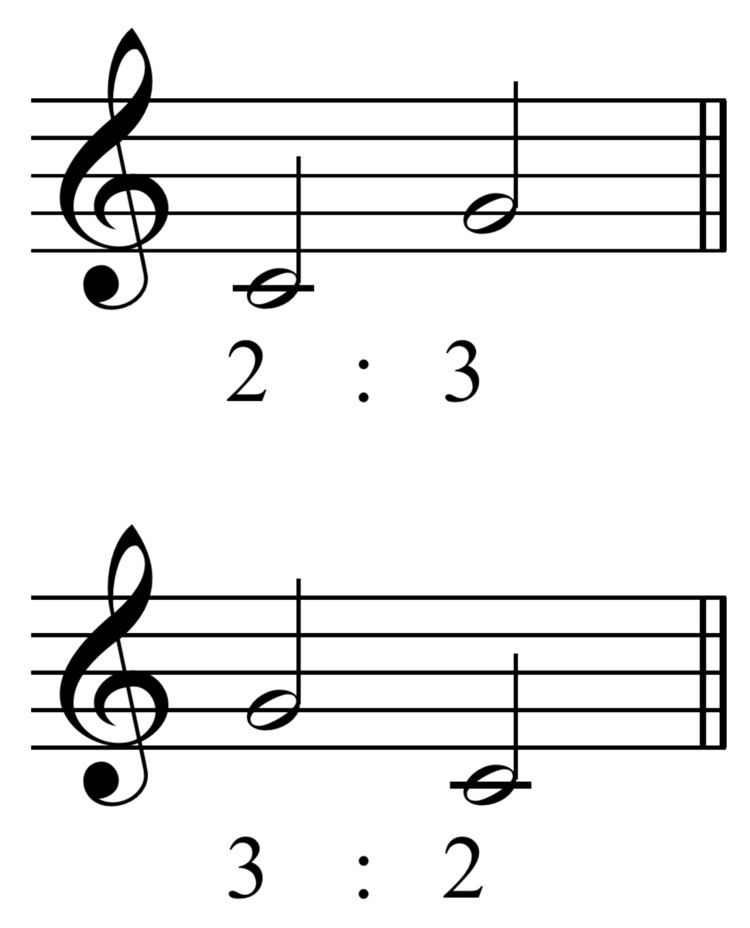 | ||
The Lipps–Meyer law, named for Theodor Lipps (1851–1914) and Max Friedrich Meyer (1873–1967), hypothesizes that the closure of melodic intervals is determined by "whether or not the end tone of the interval can be represented by the number two or a power of two", in the frequency ratio between notes (see octave).
"The 'Lipps–Meyer' Law predicts an 'effect of finality' for a melodic interval that ends on a tone which, in terms of an idealized frequency ratio, can be represented as a power of two."
Thus the interval order matters — a perfect fifth, for instance (C,G), ordered
This is a measure of interval strength or stability and finality. Notice that it is similar to the more common measure of interval strength, which is determined by its approximation to a lower, stronger, or higher, weaker, position in the harmonic series.
The reason for the effect of finality of such interval ratios may be seen as follows. If
